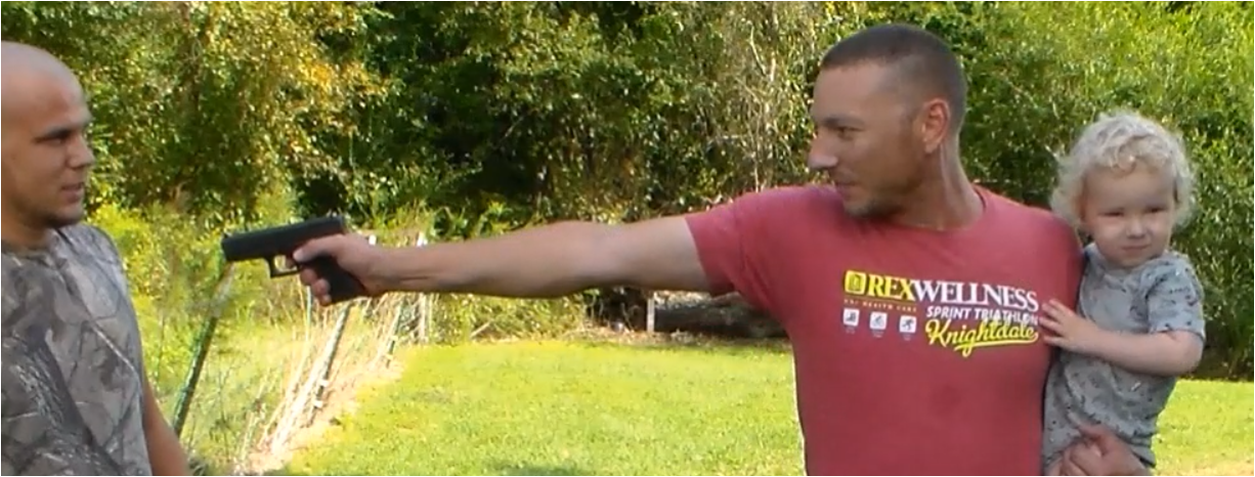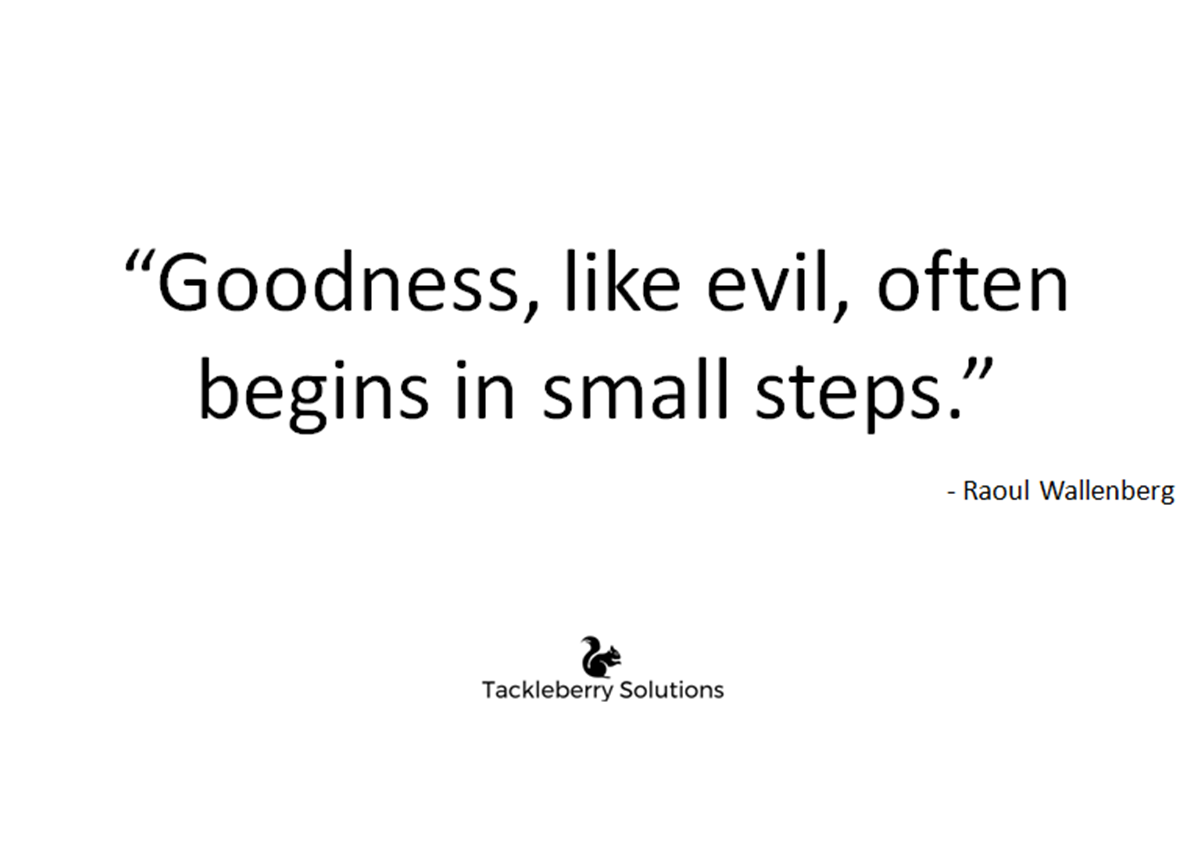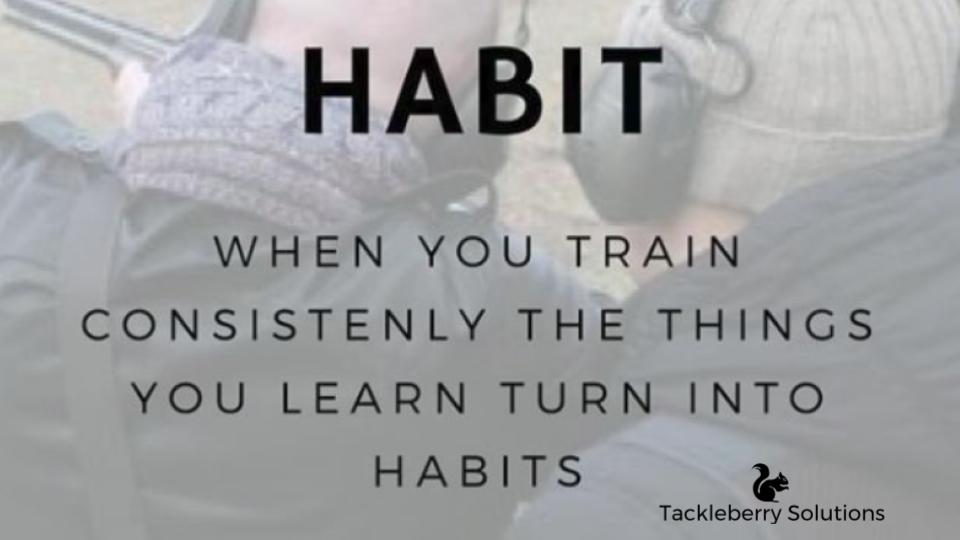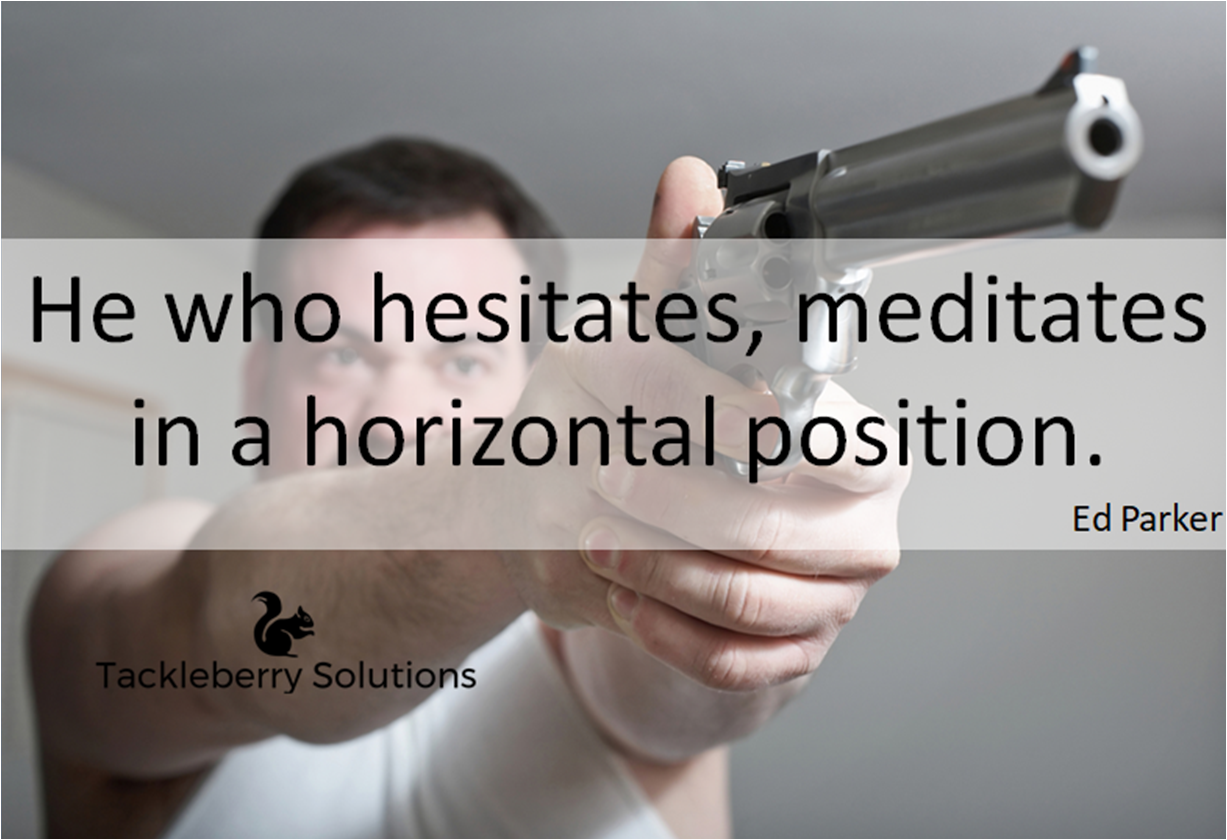"I want to specify seven trigger control errors, briefly give you my observations, and some general tips to fix these miscues."
In my years of training shooters, I have observed major trigger control errors in my students. I have also experienced several of these mistakes myself. So I want to share some advice to help other shooters.
I have learned the hard way that the first step in overcoming our mistakes is to identify what the problem is, so I want to specify seven trigger control errors, briefly give you my observations, and some general tips to fix these miscues.
Weapon Retention with a Child
Click here to learn more

The 7 Deadly Sins of Improper Trigger Control
1st Error: Jerking
"A jerk comes from the attempt to fire the shot quickly at a specific point in time that coincides with when the gun becomes immediately positioned on the target."
Jerking the trigger at the last second is a mental and physical issue, but primarily a mental one.
Shooters must understand the necessity for mentally focusing on their trigger press and train the jerk or slapping motion out of their mechanics.
If shooters are consistently shooting to the lower left (as a right-handed shooter), they are probably quickly yanking the trigger back and, not even realizing it.
A jerk comes from the attempt to fire the shot quickly at a specific point in time that coincides with when the gun becomes immediately positioned on the target.
Personal Experience with Jerking
I learned for myself that my eye was usually focused on the target and not on the front sight. Some call this "timing" the shot or anticipating the shot and that can make you jerk in itself. At that instantaneous point in time when the shooter sees the sights on the target, he quickly and suddenly yanks on the trigger with the trigger finger so as to hurriedly and immediately fire the shot.
The shooter jerks the trigger at the instant he has a perfect sight alignment. However, this quick reaction or slap usually results in the movement and compression of the rest of the fingers of the dominant hand on the grip and/or the muscles in the hand and wrist to move the muzzle off the target just before the bullet exits the muzzle.

How to Overcome Trigger Jerking
Believe me I know all about this error. Sometimes for people, anticipation and anxiousness are the genuine culprits for there jerk error. You must continually discipline your mind to overcome the jerk by mentally concentrating and focusing on the trigger press fundamentals and having a slow, smooth and deliberate trigger press with minimal movement of your other fingers and hand. Meanwhile focusing on only the front sight. Sounds easy, but it’s a challenge for everyone.
"You must continually discipline your mind to overcome the jerk by mentally concentrating and focusing on the trigger press fundamentals"
2nd Error: Flinching
"Most did not even realize they shoved the gun at the last second before the shot."
This is more of a physical response to a shot being fired where the shooter perceives the bang to be unpleasant and possibly dangerous. Flinching is stimulated by the loud noise and movement of a dangerous weapon near the face and head.
We know that firing a gun will make a loud noise and there will be recoil and mussel rise. So, it also is a mental issue because we are thinking about and anticipating the recoil and loud noise. Anticipating the upcoming recoil with the loud bang causes our premature reaction to the sound and results in a flinch.
With right-handed shooters, rounds usually impact low on the target. Also, if your shots are hitting all over the target in a wide group, you might be anticipating the recoil and flinching.
Personal Experience with Flinching
I actually have had some new shooter students who close their eyes while pressing the trigger and simultaneously shove the gun away from their face and head. Most did not even realize they shoved the gun at the last second before the shot. Of course, this movement often results in moving the gun's muzzle off target and effects accuracy.
Sometimes a flinch is confused with a jerk. The result of a flinch is usually a shot farther from the desired target hit than a trigger jerk. However, both do not achieve the desired target hit. I have observed students with a flinch even missing the entire target, as well as having widely-dispersed hits.
"I have found I can verify the flinch error with students by loading one of their magazines randomly with snap caps or dummy rounds mixed between regular rounds."
How to Overcome Trigger Flinching
"A shooter must always remind themselves to physically maintain control of the gun , grip the gun firmly, and continue to follow through after each shot."
A shooter must always remind themselves to physically maintain control of the gun , grip the gun firmly, and continue to follow through after each shot. It is important not to anticipate the noise and recoil, and be comfortable with the sound of the gun.
I have found that putting a lot of rounds down range through practice helps to overcome a flinch. This helps you to accept that you are in control of the gun, and to understand that the movement and noise are not related to your safe shooting practices. I do not fear the gun and noise and so have no reason to flinch.
Here is a helpful technique to identify and overcome flinches. I have found I can verify the flinch error with students by loading one of their magazines randomly with snap caps or dummy rounds mixed between regular rounds. So they do not know if the round they will be firing is a real round or a snap cap/dummy. Often a flinch is masked by the recoil of the gun itself, so shooters do not know nor recognize they are flinching.
Several students have emphatically said to me they are not flinching, but I knew better. By mixing the rounds, it is evident to the shooter that they are definitely flinching. When they press the trigger and the dummy round does not fire and they cause movement, they will then have strong, positive feedback that they are indeed anticipating the noise and recoil and are flinching.
3rd Error: Milking
Milking the trigger is a common trigger control error. Milking means that your grip fingers are also contracting as your index trigger finger contracts to press the trigger.
Of course, just your trigger finger should move, and it should move straight back, smoothly, continuously, without interruption and not intermittently (not stop-and-go.) Milking is extra movement that effects accuracy.
"Milking means that your grip fingers are also contracting as your index trigger finger contracts to press the trigger."
Fundamentally then, only the trigger finger should move when pressing the trigger. That movement should be straight back, rather than sideways or up or down. The trigger finger should be isolated from the other fingers of your shooting hand. Your index trigger finger should be the only finger that moves.
Shooters must recognize that when you grab or press something with one hand and fingers, (especially while under stress) your opposite hand and fingers may want to unintentionally mirror that movement with a sympathetic response.
How to Overcome Trigger Milking
Studies have shown some inadvertently fire their gun while doing something with their non-gun hand or fingers, so be careful! Shooters must focus on using the trigger finger independently so as to minimize extraneous movement. At the same time as maintaining a constant and consistent grip on the gun with the rest of the hand. Practice develops the muscle memory.
4th Error: Palming
"This occurs when the shooter exerts excessive forward pressure with the heel of the hand as the gun is fired."
This occurs when the shooter exerts excessive forward pressure with the heel of the hand as the gun is fired. This pressure forces the front sight up just as the trigger trips the sear. It will usually result in a shot group high near the 12:00 position on the target.
How to Overcome Trigger Palming
Diagnosing and fixing trigger control palming errors (as well as any of these errors) is not an exact science because several other factors may be involved. Like problems with proper grip, sight alignment, sight picture, stable stance, etc. A complete and deliberate focus on the front sight, both mentally and visually, will usually help cure this error.
Of course, do not anticipate recoil, do not push the heel of the hand forward when the shot breaks, and do not break your wrist upward.
5th Error: Thumbing
Thumbing is squeezing the thumb or applying too much trigger finger/thumb pressure when firing the shot.
For example, if a right-handed shooter rotates his thumb clockwise to the right during the trigger press, the rounds will likely hit to the right. This is a thumbing error.
Without a doubt, the point of bullet impact is dependent on the movement of the shooter's trigger finger, thumb and hand at the moment the trigger is pressed. Proper grip is a key factor to help prevent the thumbing error. I like to rest my strong thumb firmly on top of my support thumb and try to not move my strong thumb and fingers sympathetically with movement of my trigger finger during the press.
"Without a doubt, the point of bullet impact is dependent on the movement of the shooter's trigger finger, thumb and hand at the moment the trigger is pressed."
6th Error: Pushing
Pushing the gun up, down or to either side with no follow through is a common error, especially for new shooters. Placing too little of the finger on the trigger causes the finger to push the trigger back and to the left instead of straight back. Too much finger is just as bad.
So bullets impact the target at 9:00 or 10:00 for a right-handed person and 2:00 or 3:00 for a left-handed person. If too much trigger finger is accompanied with a breaking wrist action, either up or down, then bullets impact at 8:00 or 6:00 respectively.
How to Overcome Trigger Pushing
"A surprise break is absolutely essential to achieving any kind of accuracy with a handgun."
Be certain to firmly lock the strong-hand wrist, grip the gun firmly, do not lean backward, and do not push the gun in any direction at the last second before firing the shot. You should experience a "surprise break" when the shot fires.
A surprise break is absolutely essential to achieving any kind of accuracy with a handgun. For the gun to fire with a surprise break, we apply pressure to the trigger gradually and evenly until it fires. When it actually does fire, we are surprised because we have not anticipated the exact moment of the break.
The key to perfecting the surprise break is a lot of practice where you put steady and incrementally heavier pressure on the trigger until the gun goes bang. Easy to say hard to do sometimes!
7th Error: Holding Too Long
This error draws out the trigger press because the shooter wants a perfect shot and target hit. I see this in new handgun students frequently because they want to qualify and not have bad shots. As a result, they are slow, indecisive and overly cautious in their trigger press.
They do not exert positive and proper pressure on the trigger at the proper time. Instead of 3 seconds or so, they may take 7 to 8 seconds for just one shot in basic training. They hold their breath and that can cause the body to lose proper eyesight because the eye is the first to be effected by lack of oxygen. The muscles go next.
Why Trigger Holding is Bad
"Train for accuracy first with proper fundamentals, then train for speed. "
A consequence of a long hold is that the shooter's breath control is poor, and there usually is undesirable movement and less accuracy.
The shooter may not have enough air to hold his breath for the extended time used to minimize movement. This actually causes just the opposite of what he wants — a miss or an inaccurate shot because of more movement.
Naturally, in a real-life encounter or tactical situation, this delay could be deadly. So for your initial training as a new shooter at the range, get that shot off in no longer than 3 seconds, if not sooner. But remember, train for accuracy first with proper fundamentals, then train for speed.
Want to Learn More?
This article was written by Kent Lebarts - owner of Elko Tactical.
Share Your Thoughts
Have I missed anything? If you know of another bad shooting habit or would like to expound on anything I've said, share it with us in a comment below.




